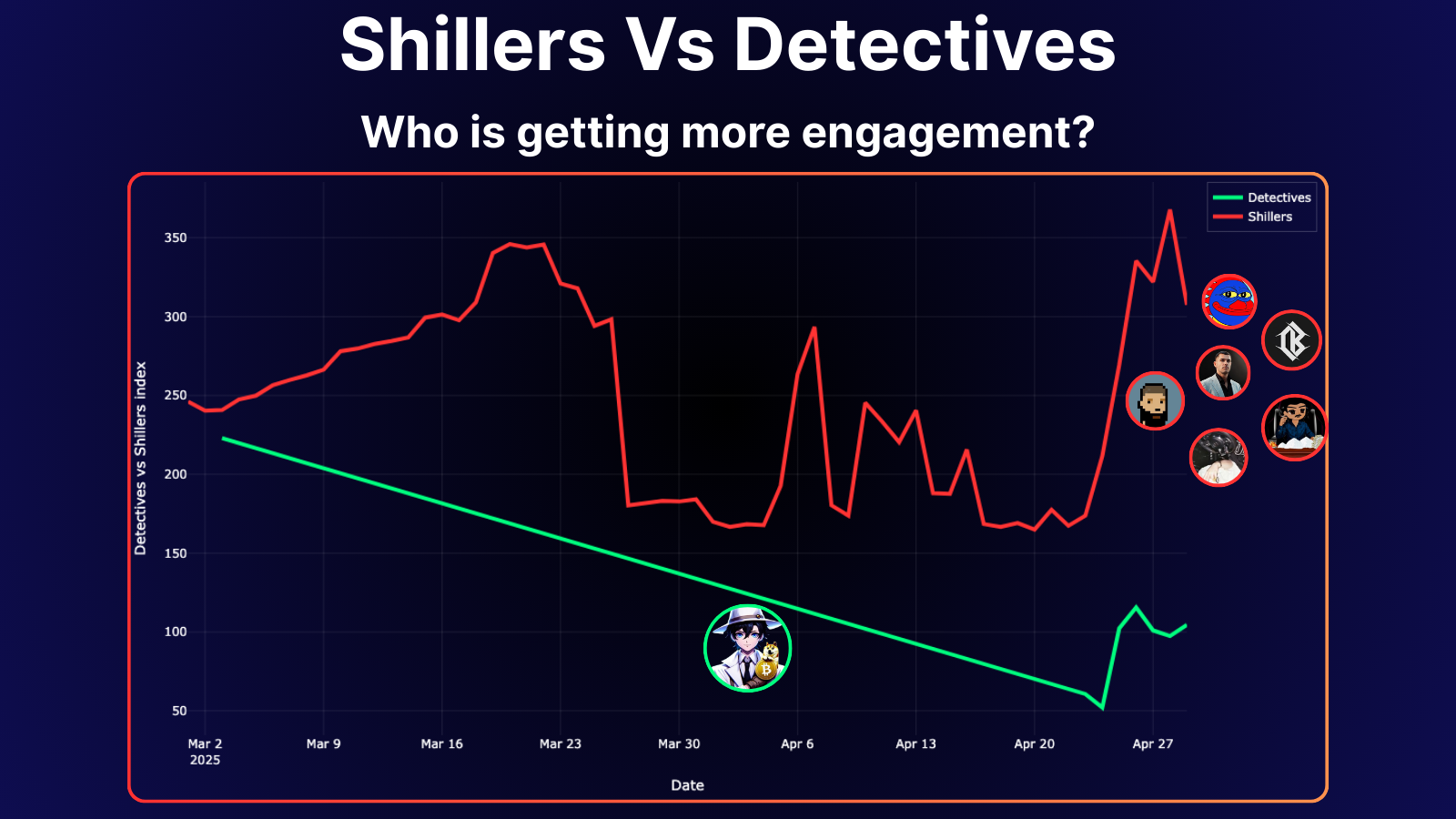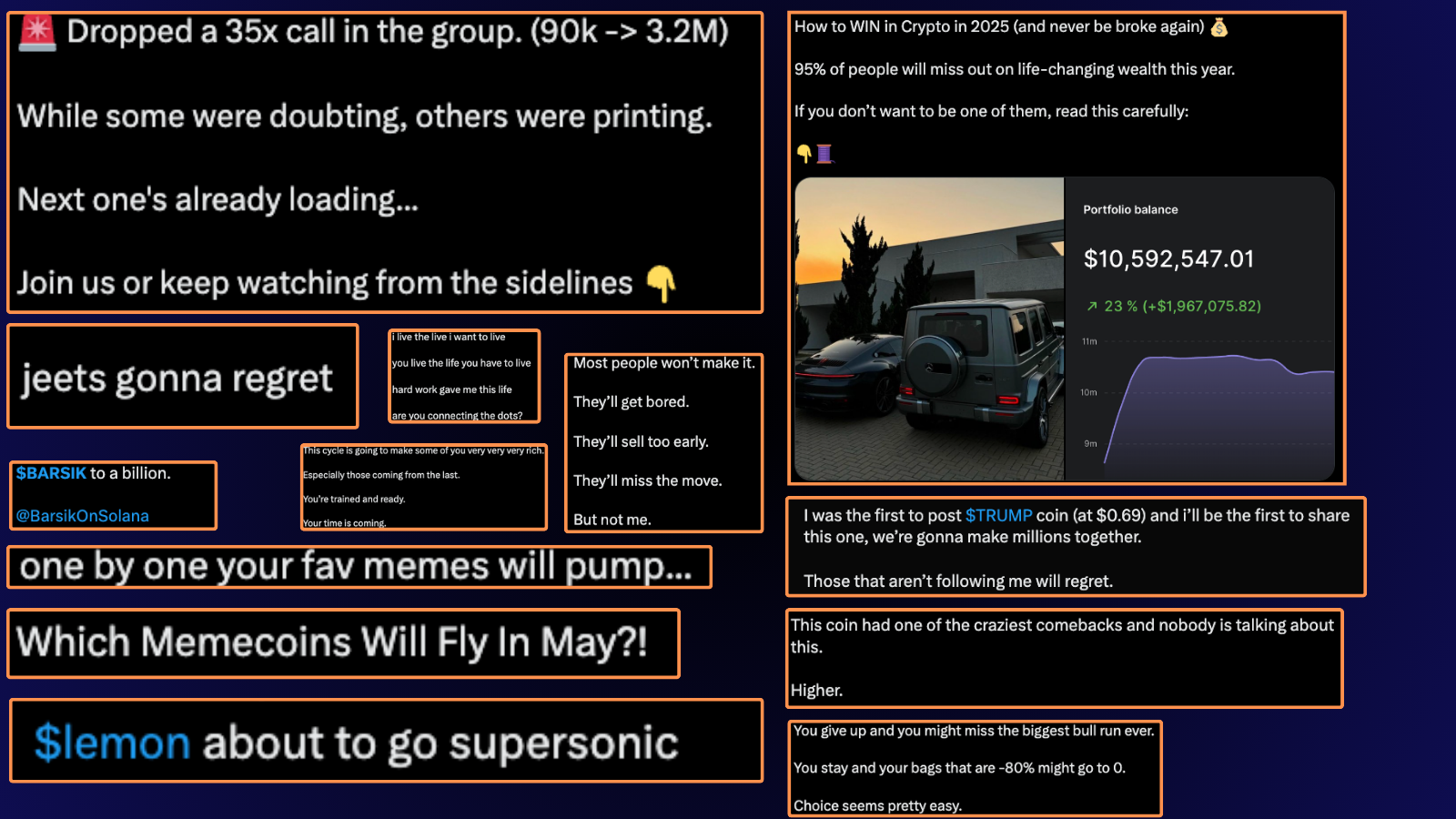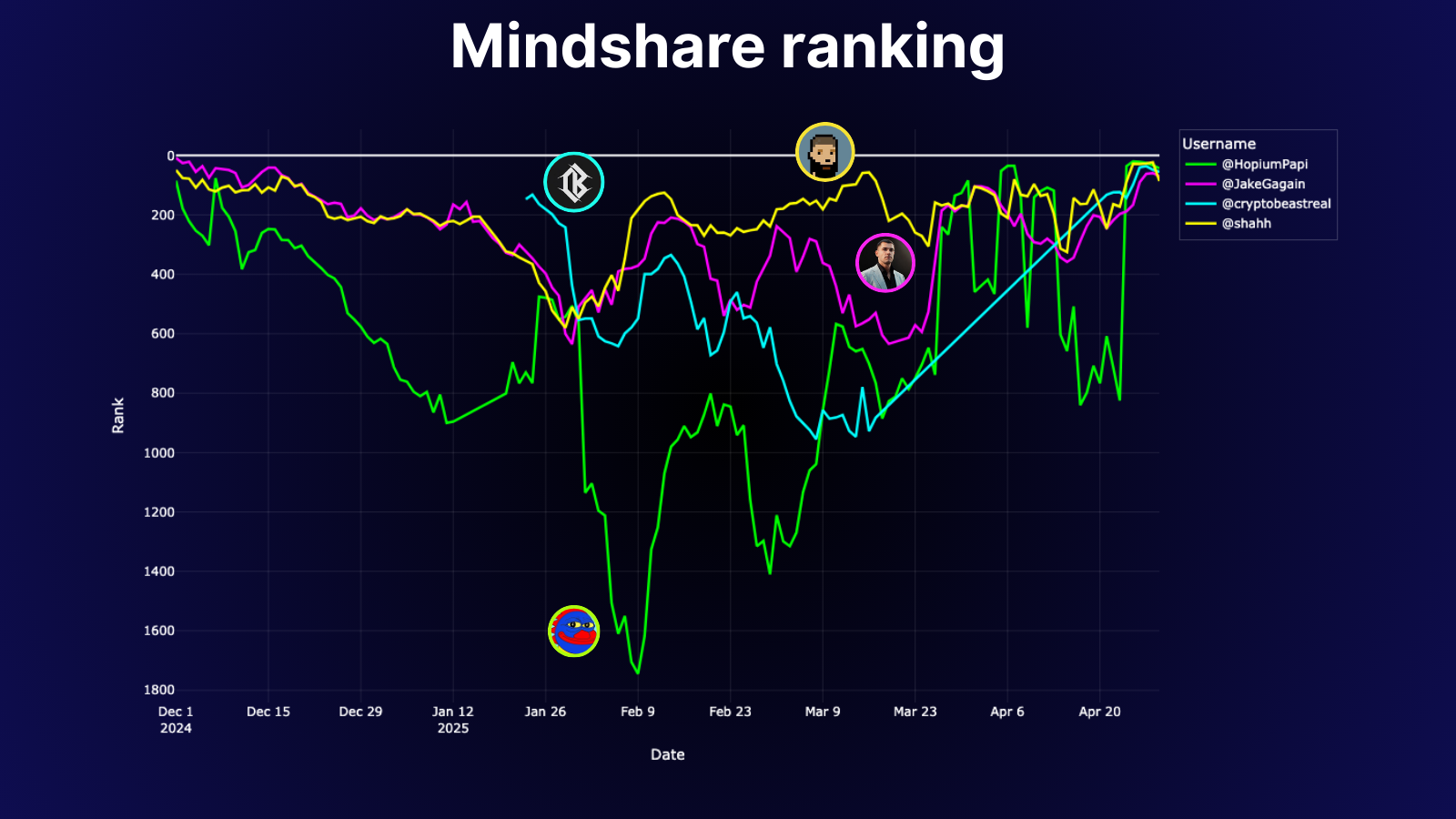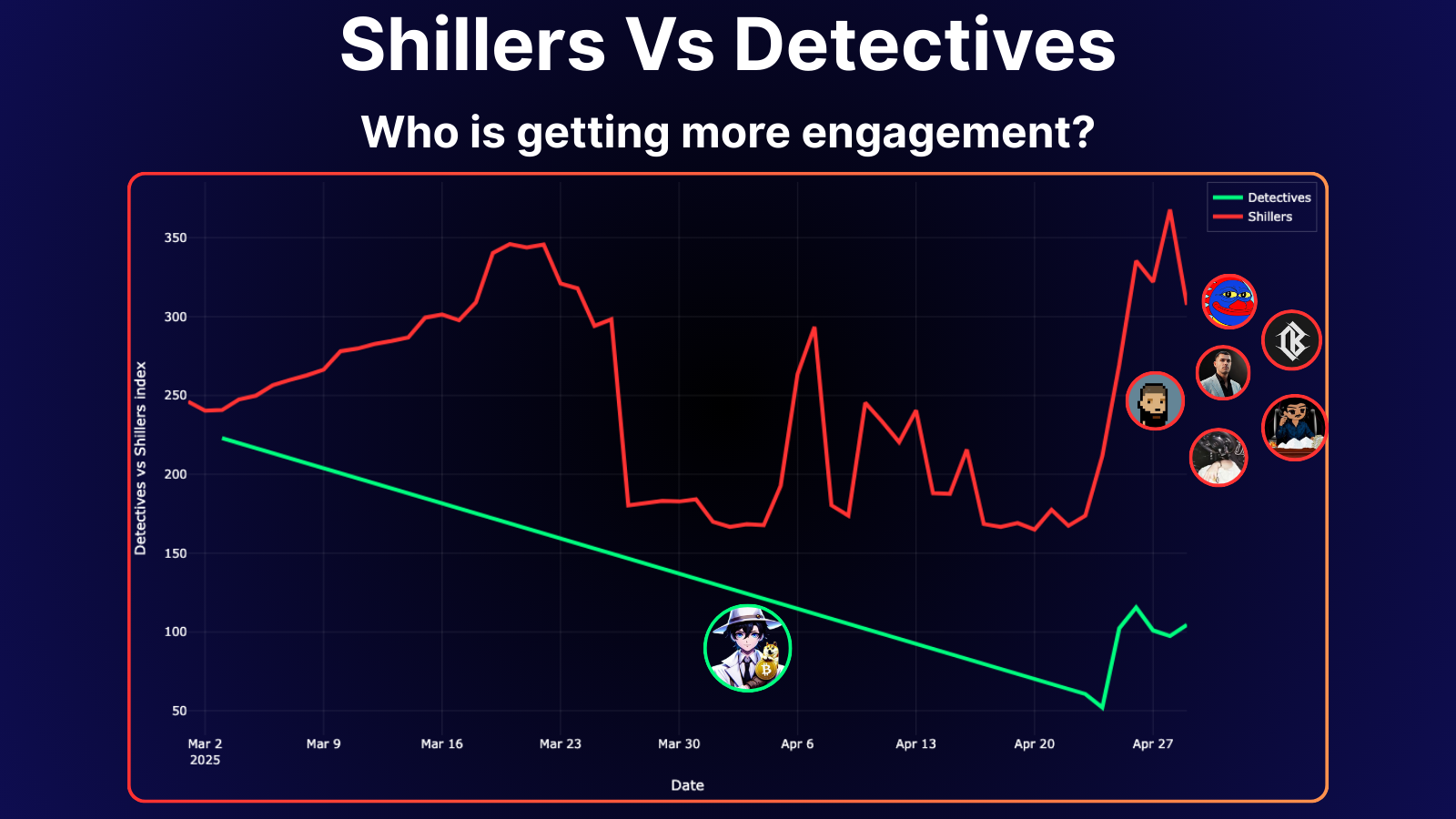Detectives vs Shillers: an engagement race

I've always had a question in my mind.
We all know that Twitter is full of account:
• Shilling a low cap ticker everyday
• They might have been paid or simply bought the supply before
• The token usually dump, leaving the majority of the followers with a huge loss
The real question is:
Does this affect the credibility and the engagement metrics of an account?
I made some manual experiment in the past, but now I am using the powerful Messari API to get more in depth.
At the end of this article you will learn:
• How constant shillers growth, with respect to on-chain detectives
• How shilling a project that clearly fail affect engagements metrics
• If you ever shilled a token, you will have the code to check how it affected the engagement
Token launch = peak of engagement
Ok, I know that's quite intuitive but I believe it's still better to crunch the data
Benchmark token&account
The first step is to select a few accounts to use as benchmarks.
I chose the four accounts listed below because:
• They are undeniably tied to the specific coin.
• Even if some of them claim it’s "just promotion," the token’s value exists solely because of their promotional efforts.
• The token performed extremely poorly, and only a very small percentage of users managed to make any profit.

*Hasbulla Coin wasn’t really launched that day — the project was just revamped. I couldn't use the original launch date because it was too old (not available)
The metric
I used the Messari API to get the historical data of each account.
Then for each timeseries I applied a small formula to normalize the data and make each line comparable to the others

The chart
Now you have all the info to understand the chart that I am about to show you

Launching get engagement, but there is some damage in the reputation?
To analyse how the reputation is affected by promoting a rug pull (or a scheme that clearly favours insiders) I analysed 2 examples:
• Mario Nawfal's Round Table: after the promotion of a clear rug
• "The $LIBRA streamers": before and after $LIBRA, when a group of people were accused of being insiders
Mario Nawfal case

The account is dominating Twitter right now, but if you're not familiar with Mario Nawfal, here’s a quick explanation:
This alignment has likely contributed to the surge in his attention and growing audience.
In this article, we'll focus specifically on his crypto-related account: @RoundtableSpace.
The "failed promotion"
If you ask me, this account has promoted countless similar tokens, but only one actually got the full attention of crypto Twitter and caused a huge slash in its reputation.

I am not going to dive into all the details of the debate. If you want to catch up on the full story, you can check out my thread.
Here, we are going to focus on answering one question: Did it affect the account’s engagement?
The engagement metrics
Again, I am using the Messari API to get the historical engagement.
Let's see if it changed before and after

The chart clearly shows that engagement dropped after the date of the scandal.
To highlight this even further, I calculated the median engagement score before and after the event: it fell from 66 to 36.
The "Libra live streaming"
Here's another interesting story.
After the $LIBRA scandal, several well-known accounts were accused of having insider information about the coin.
Let’s take a look at how their engagement metrics changed before and after the launch of the Kelsiers-backed token.

Again, it's better with the median change before and after:
• gianinaskarlett: -8.3%
• Before: 120 / After 110
• SolJakey: -10%
• Before: 99 / After: 89
Why are they getting less engagement?
The answer is not as fancy as you might expect. They were just posting less content.
But the reputation issue is very likely the reason why they were posting less.
Personally, I would do something similar. Stay quiet, wait for people to forget, and start again normally after a while
The only winning accounts
So far, we can draw the following conclusions:
1/ New token launches tend to boost engagement.
2/ Failed launches often lead to a noticeable drop in engagement.
The solution is quite simple.
The old token failed? No problem, there’s always a new one ready.
The identikit of the forever shilling account

There is a class of accounts that are always winning, regardless of the market conditions and the number of pump and dumps they promote.
The content they provide is generally a mix of the following:
• Sharing a lot of tickers saying "this is going to a billion"
• Showing off first-class flights, watches, and luxury
• Posting motivational tweets that push you to risk more
• Claim the only reason you're not winning it's because you're not working hard or risking.
• Using an aggressive tone against any critics
In my opinion, these kinds of accounts are always winning because of something very simple.
An account shared 3 days ago a ticker that went down 90% and yesterday another that is -70%?
The one from today is pumping. Are you criticising? Cope harder
The mindshare ranking
So far, this was my opinion. Can we have some data backing the fact that this kind of account are always winning?
Yes, I used again the Messari API, in this case I chose the mindshare rank.
I made this choice because it was easier for me to get an idea of an account "going up" or "going down"
I selected some account as a benchmark with this specific behaviour.
Here is the chart for the last couple of months:

Detectives vs Shillers, the index
This whole researched started to answer a really personal question:
Well, after spending a lot of hours, I have the answer.
The shiller index
My goal is to check what this kind of account are doing on average. We can have some outliers and I want to avoid skewing the data too much.
The process I followed is the following:
• Get the engagement for a group of 13 accounts
• Cut off from the first date where the data was available for everyone
• Construct an index of all those by aggregating the engagement I got from Messari API
The list of account
To create the index I had to find some accounts with the following characteristics
1. They correspond to the identikit outlined before
2. They are big enough to be recorded by Messari API
You can see the final list I got in the table below

Honestly I wanted to create a similar index for "detectives" as well, but it was hard to find accounts with enough mindshare to be consistently tracked.
This kind of analysis is quite interesting to understand the demand for these accounts. I know there is ZachXBT but he's too OP to be included here.
So for now, I just use myself.
We are finally here to see the chart.

The result is quite shocking.
| Account | Starting Engagement | End Engagement | Performance |
|---|---|---|---|
| Shiller Index | 246 | 307 | +24% |
| Dethective | 222.95 | 104 | -53% |
My account really underperformed with respect to the benchmark.
I don't wanna be the guy that want to look perfect, it's really possible that I made some mistake and my content was not "good enough" to get engagement lately.
What I want to focus on more is the fact that the other type of account never seems to go through a crisis.
Conclusions
To sum up, my research led me to the following conclusions:
• A user's engagement always peaks around the time of a token launch. This likely applies not only to individual accounts but also to the projects themselves.
• Promoting a poorly performing token leads to a drop in engagement.
• However, if you keep promoting new tokens, your engagement tends to go up regardless.
• Accounts like mine aren't particularly effective in terms of engagement, and the same goes from a business perspective. The only real driver is passion.
Github Repo
The code used in this article is available in this GitHub repository.
It’s not overly complex—mostly a wrapper around functions from the Messari API, along with a notebook containing all the data processing and visualizations I created.
Just plug in your Messari Premium API key, and you’ll be able to replicate the results easily.

